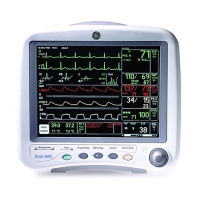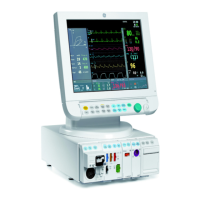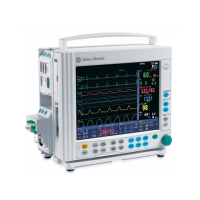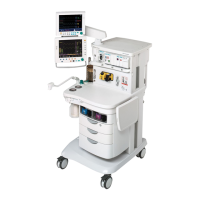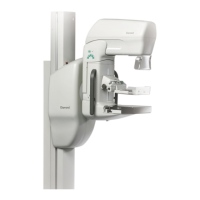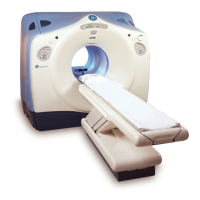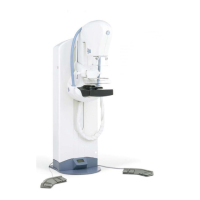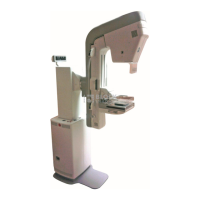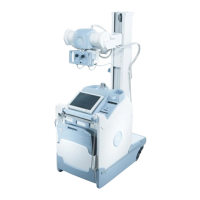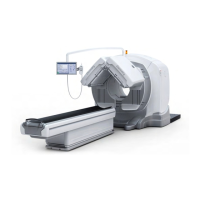9-18 Dash 2500 Patient Monitor 2042480-001 C
ECG: Poor Signal Troubleshooting
waveform appears on the display as well as on recordings. Since line
interference is continuous, it must either be removed or tolerated.
Sources of line interference include faulty lighting (especially fluorescent lights
or ballasts), other equipment in the vicinity, or poor grounding. If line interference
is present, verify that the electrode lead wires (especially with neonate cables
and leads that have no shielding) are running close to each other. Braid the lead
wires if possible. This often decreases the amount of interference.
While attempting to determine the source of the interference or if the
interference cannot be removed, the ARTIFACT alarm can be silenced
temporarily by pushing the silence button.
Baseline Wandering
Baseline wandering is generally intermittent but can also be continuous. The
intermittent form is typically due to pushing on electrodes, pulling of lead wires,
or poor electrode connection. The continuous form is primarily due to
respiratory effort.
Baseline wandering may not be apparent on the display if 0.5 to 40 Hz
bandwidth is selected. To verify if baseline wandering is present, it may be
necessary to set the Display filter option at 0.05 to 100 Hz. Often, changing the
selected primary lead or repositioning the electrodes eliminates continuous
forms of baseline wander.
Saturation
Saturation is an intermittent condition due to mechanical movement of one or
more electrodes or bad electrode connection. Saturation can last for up to 20
seconds from a single saturation event using a bandwidth of 0.05 to 100 Hz or
0.05 to 40 Hz. Multiple saturation events can generate longer periods of
saturation. With a bandwidth of 0.5 to 40 Hz, the signal may appear to be back
in the center, but an artifact message continues to be displayed until the 0.05 to
100 Hz signal actually returns to the center for longer than 2 seconds.
If the saturation of the signal causes the waveform to move between the top
and bottom of the display and the waveform does not stay in the middle of the
display long enough, then the clinician should change the primary lead or
decrease ECG waveform size. If saturation of the signal is continuously at the top
or continuously at the bottom for extended periods of time, electrode contact
should be checked or replaced.
Poor Electrode Connections
Poor electrode connection can be the cause for any form of ECG interference.
The clinician should check and replace lead wires or electrodes as necessary.
When applying electrodes, prep the area as recommended under subhead
Procedures earlier in this section.
Most clinical applications use the default of 0.5 to 40 Hz for the Display filter
setting. The diagnostic mode (0.05 to 100 Hz) is mainly used for observing ST
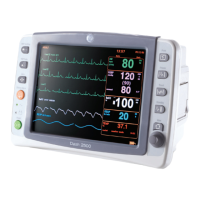
